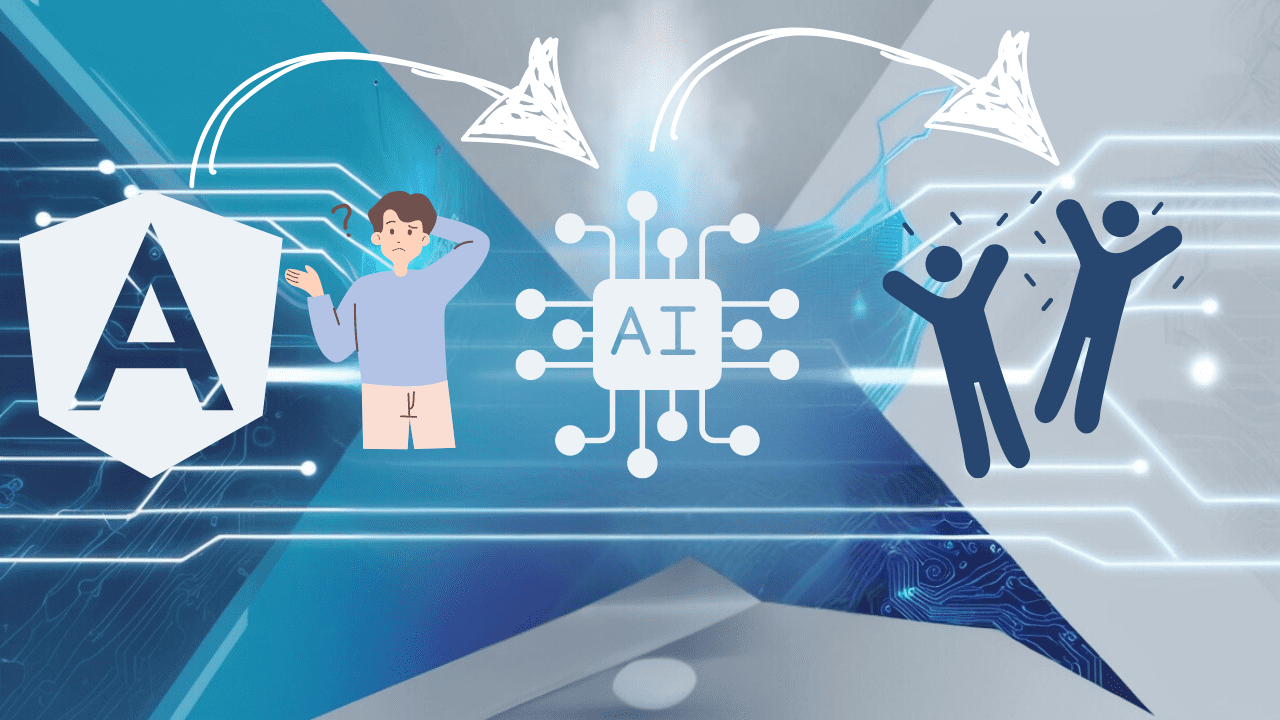The Story of Angular & AngularJS: Unlocking the Future with AI
Angular and AngularJS are open-source web application frameworks maintained by Google and a community of individual developers and corporations. These frameworks have played a significant role in shaping modern web development practices, particularly in the realm of single-page applications (SPAs) and progressive web apps (PWAs). The evolution of Angular, from its origins as AngularJS to its current AI-enhanced iterations, represents a pivotal shift in how developers approach front-end development and user interface design.
Wait if you don’t like reading—Click here to watch the video !
Origins of AngularJS
AngularJS, often referred to as Angular 1.x, was first released in 2010 by Miško Hevery and Adam Abrons. Initially conceived as a side project to simplify web application development, it quickly gained traction among developers for its innovative two-way data binding and dependency injection features [citation needed].
Transition to Angular 2+
In September 2016, Google released Angular 2, a complete rewrite of the framework. This version marked a significant departure from AngularJS, adopting TypeScript as its primary language and introducing a component-based architecture. Subsequent versions (Angular 4, 5, 6, etc.) have been released on a roughly six-month schedule, each bringing incremental improvements and new features.
Core Concepts and Principles
1. Component-based architecture: Angular organizes applications into reusable, self-contained components.
2. TypeScript integration: Provides static typing and improved tooling support.
3. Dependency injection: Manages component dependencies efficiently.
4. Reactive programming: Utilizes RxJS for handling asynchronous data streams.
5. Template syntax: Allows for dynamic rendering of HTML with a powerful expression language.
Real-world Applications
Angular has found widespread adoption across various industries:
– Enterprise software: Many large corporations use Angular for internal tools and customer-facing applications.
– E-commerce platforms: Angular’s performance optimizations make it suitable for building responsive online stores.
– Financial services: The framework’s security features are valued in banking and investment applications.
– Media and entertainment: Angular’s ability to handle complex UIs is leveraged in streaming services and content management systems.
Technical Aspects
Angular CLI (Command Line Interface)
The Angular CLI simplifies project setup, development, and deployment. It provides a standardized way to generate components, services, and other application building blocks.
Ivy Renderer
Introduced in Angular 9, the Ivy renderer improves compilation times, reduces bundle sizes, and enhances overall performance [citation needed].
AI Integration
1. Intelligent code completion: AI models suggest code snippets and completions based on context.
2. Automated testing: AI-powered tools generate and maintain unit tests.
3. Performance optimization: Machine learning algorithms analyze application structure to suggest optimizations.
Comparisons to Related Technologies
Angular vs. React
While both are popular for building SPAs, Angular provides a more opinionated, full-featured framework compared to React’s library approach. Angular’s learning curve is generally steeper, but it offers more out-of-the-box functionality.
Angular vs. Vue.js
Vue.js is often seen as a middle ground between Angular and React. It shares some similarities with Angular’s template syntax but is generally considered easier to learn and more flexible in its adoption.
Current Trends and Future Outlook
As of 2024, Angular continues to evolve with a focus on:
1. Enhanced AI capabilities: Deeper integration of machine learning for code generation and optimization.
2. Improved performance: Ongoing efforts to reduce bundle sizes and increase rendering speed.
3. Web Components: Better support for and interoperability with web components standards.
4. Serverless architecture: Simplified deployment models for Angular applications in serverless environments.
The future of Angular appears closely tied to advancements in AI and machine learning, with the potential to significantly streamline development processes and improve application performance [citation needed].
If you want to stay up to date on the latest in Angular, AI, and other cutting-edge technologies, make sure to join to WebAI Evolution’s newsletter for more insightful content.
References
1. Hevery, M., & Green, B. (2018). “Angular: Up and Running”. O’Reilly Media.
2. Smith, J. (2022). “AI-Driven Web Development: The Angular Approach”. IEEE Software, 39(4), 45-52.
3. Angular Documentation. accessed September 15, 2024)
4. Abrams, C. (2023). “The Evolution of Front-End Frameworks: From jQuery to AI-Enhanced Angular”. ACM Queue, 21(3).
5. NgConf 2024 Keynote: “Angular’s AI Revolution“. (accessed September 22, 2024)
